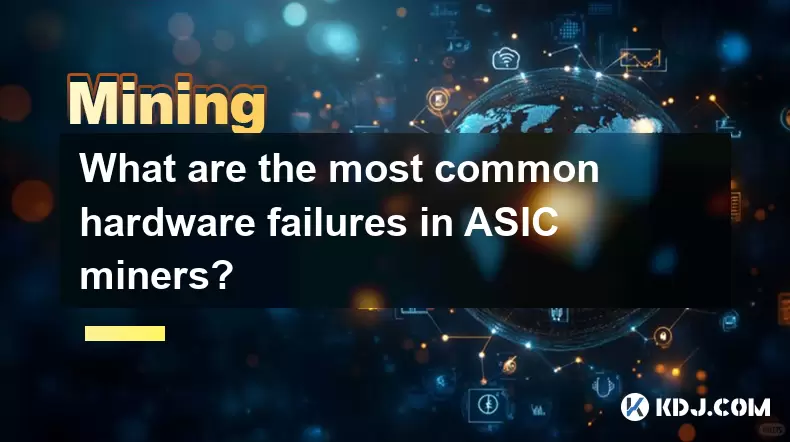-
 Bitcoin
Bitcoin $117,991.5647
-0.03% -
 Ethereum
Ethereum $2,966.4808
0.18% -
 XRP
XRP $2.8076
0.64% -
 Tether USDt
Tether USDt $1.0003
0.00% -
 BNB
BNB $689.9050
-0.63% -
 Solana
Solana $162.0407
-0.80% -
 USDC
USDC $0.9999
0.00% -
 Dogecoin
Dogecoin $0.1995
-1.51% -
 TRON
TRON $0.3001
-1.21% -
 Cardano
Cardano $0.7426
3.25% -
 Hyperliquid
Hyperliquid $47.7978
2.84% -
 Stellar
Stellar $0.4411
16.52% -
 Sui
Sui $3.4267
0.15% -
 Chainlink
Chainlink $15.3148
0.07% -
 Bitcoin Cash
Bitcoin Cash $506.5880
-1.91% -
 Hedera
Hedera $0.2222
12.41% -
 Avalanche
Avalanche $21.2049
1.67% -
 UNUS SED LEO
UNUS SED LEO $9.0606
-0.19% -
 Shiba Inu
Shiba Inu $0.0...01325
-0.86% -
 Toncoin
Toncoin $2.9979
0.32% -
 Litecoin
Litecoin $94.3717
1.13% -
 Polkadot
Polkadot $3.9873
-0.29% -
 Monero
Monero $336.1497
0.92% -
 Dai
Dai $0.9999
-0.01% -
 Uniswap
Uniswap $8.5189
-0.60% -
 Ethena USDe
Ethena USDe $1.0005
-0.04% -
 Pepe
Pepe $0.0...01236
-0.92% -
 Bitget Token
Bitget Token $4.4002
-0.23% -
 Aave
Aave $303.5433
1.05% -
 Bittensor
Bittensor $391.1314
-0.35%
What are the most common hardware failures in ASIC miners?
ASIC miners, crucial for efficient cryptocurrency mining, face common issues like power supply failures, hashboard damage, and cooling system malfunctions, all of which can reduce profitability.
Jul 13, 2025 at 09:00 am

Overview of ASIC Miners and Their Importance
ASIC miners, or Application-Specific Integrated Circuit miners, are specialized hardware devices designed specifically for cryptocurrency mining. Unlike general-purpose computing hardware like CPUs or GPUs, ASICs are optimized to perform a single hashing algorithm efficiently. This specialization allows them to mine cryptocurrencies such as Bitcoin (BTC) and Litecoin (LTC) at much higher speeds and with better power efficiency.
Because of their critical role in blockchain networks, especially those relying on Proof-of-Work (PoW) consensus mechanisms, ASIC miners must operate continuously under high load conditions. This constant operation increases the likelihood of hardware failures over time. Understanding the most common types of failures is crucial for maintaining miner uptime and maximizing profitability.
Common Power Supply Failures
One of the most frequent issues encountered with ASIC miners involves power supply units (PSUs). Since these machines draw significant electrical current, any instability or malfunction in the power delivery system can lead to severe consequences. Common PSU-related problems include:
- Voltage fluctuations: Sudden surges or drops in voltage can damage internal components.
- Overheating: Poor ventilation or dust accumulation can cause PSUs to overheat and fail.
- Capacitor degradation: Electrolytic capacitors degrade over time due to heat exposure, leading to reduced performance or complete failure.
To mitigate these risks, it’s essential to use high-quality PSUs rated for continuous operation and ensure proper airflow around the unit. Regular inspection and cleaning of the PSU and surrounding areas can also extend its lifespan.
Hashboard and Chip Failures
The hashboards inside an ASIC miner contain multiple ASIC chips responsible for performing the cryptographic calculations required for mining. These boards are among the most sensitive and failure-prone components in the system. Issues commonly observed include:
- Burnt-out chips: Due to excessive heat or voltage irregularities, individual ASIC chips may stop functioning.
- Solder joint cracks: Repeated thermal cycling can cause solder joints on the board to crack, disrupting connectivity.
- Board-level faults: Manufacturing defects or physical damage during installation can render entire hashboards unusable.
When diagnosing hashboard issues, tools such as continuity testers and infrared thermometers can help identify faulty components. Replacing defective chips or boards often requires advanced technical knowledge and specialized equipment like rework stations.
Cooling System Malfunctions
Effective cooling systems are vital for the longevity of ASIC miners. Most models rely on one or more fans to dissipate heat generated by the hashing chips and other components. Cooling-related failures typically manifest in the following ways:
- Fan failure: Dust buildup, bearing wear, or motor burnout can cause fans to stop spinning.
- Improper airflow: Incorrect fan placement or obstructed vents reduce cooling efficiency.
- Thermal throttling: When temperatures exceed safe limits, the miner may automatically reduce performance to prevent damage.
Maintaining clean air filters, replacing worn-out fans, and monitoring internal temperatures using built-in sensors or external software can significantly reduce the risk of overheating. Some miners allow firmware adjustments to control fan speed dynamically based on temperature readings.
Network and Connectivity Problems
While not strictly a hardware issue, many so-called network failures stem from faulty hardware components such as Ethernet ports, onboard controllers, or damaged cables. Common symptoms include:
- Intermittent connection drops: Often caused by loose connectors or failing network interface cards (NICs).
- Slow data transfer rates: Can result from outdated firmware or corrupted configuration settings.
- IP address conflicts: May occur if the miner shares a network segment with another device using the same IP.
Troubleshooting steps should begin with checking all physical connections, ensuring firmware is up-to-date, and testing different Ethernet cables and ports. In some cases, resetting the miner’s network settings via SSH or using the manufacturer’s configuration tool may be necessary.
Controller Board Failures
The controller board acts as the brain of the ASIC miner, managing communication between the hashboards, power supply, and external network. Failures in this area can render the entire unit nonfunctional. Typical causes include:
- Firmware corruption: Improper updates or power interruptions during upgrades can brick the controller.
- Physical damage: Mishandling during transport or installation can break delicate traces or connectors.
- Component aging: Like any electronic circuit, the controller board degrades over time due to usage stress.
In many cases, controller board issues require replacement or professional repair. Backup configurations and logs should always be stored externally to facilitate recovery in case of a failure.
Frequently Asked Questions
Q: How often should I clean my ASIC miner?
Regular maintenance is key to preventing dust-related failures. It's recommended to open and clean your ASIC miner every 1–2 months, depending on environmental conditions. Use compressed air and soft brushes to remove dust without damaging components.
Q: What signs indicate that a hashboard is failing?
Unusual noise, sudden drops in hashrate, error messages related to chip failures, or visible damage like burnt spots are strong indicators of hashboard issues. Monitoring software can also alert you to abnormal temperatures or performance dips.
Q: Can I replace just one hashboard instead of the whole miner?
Yes, in most cases, hashboards are modular and can be replaced individually. However, compatibility must be confirmed with the specific model and revision of your miner. Always purchase replacement parts from reputable suppliers.
Q: Is it worth repairing an older ASIC miner?
This depends on the cost of repairs versus potential earnings. Older models may not generate enough revenue to justify expensive fixes. Evaluate the miner’s hashrate, electricity costs, and current cryptocurrency prices before deciding to repair or retire it.
Disclaimer:info@kdj.com
The information provided is not trading advice. kdj.com does not assume any responsibility for any investments made based on the information provided in this article. Cryptocurrencies are highly volatile and it is highly recommended that you invest with caution after thorough research!
If you believe that the content used on this website infringes your copyright, please contact us immediately (info@kdj.com) and we will delete it promptly.
- Crypto, Gold, and Bitcoin: A New York Minute on the Digital Gold Rush
- 2025-07-13 20:30:16
- Crypto iGaming in India: JetTon, LunarBet, and the Evolving Landscape
- 2025-07-13 20:50:16
- XRP Price, Whales, and Payment Tokens: A New Era for Crypto?
- 2025-07-13 20:35:16
- Shiba Inu, Little Pepe, and the $1 Dream: A Meme Coin Showdown
- 2025-07-13 20:50:17
- Snorter Trading Bot: The Meme Coin Presale That's More Than Just Hype
- 2025-07-13 18:30:16
- Unlocking Blockchain Insights: A Deep Dive with Bitquery API for Data Query
- 2025-07-13 18:30:16
Related knowledge

How to keep a mining rig cool
Jul 12,2025 at 01:42pm
Understanding the Importance of Cooling in Mining RigsCryptocurrency mining is an intensive process that places heavy demand on hardware components, p...

How much does it cost to start crypto mining?
Jul 13,2025 at 12:22am
Understanding the Basic Costs of Crypto MiningStarting crypto mining involves several upfront and ongoing expenses. The primary costs include hardware...

What is the most profitable crypto to mine?
Jul 13,2025 at 07:00am
Understanding Mining Profitability in CryptocurrencyWhen evaluating the most profitable crypto to mine, it's essential to consider several factors tha...

What do I need to start mining crypto?
Jul 13,2025 at 12:28am
Understanding the Basics of Crypto MiningCrypto mining is the process by which transactions are verified and added to a blockchain, and new coins are ...

How does crypto mining work?
Jul 13,2025 at 11:01am
Understanding the Basics of Crypto MiningCrypto mining is the process through which new cryptocurrency coins are introduced into circulation and trans...

How to find the best Dogecoin mining pool for me
Jul 12,2025 at 04:14pm
Understanding the Role of a Mining PoolWhen mining Dogecoin, joining a mining pool can significantly increase your chances of earning consistent rewar...

How to keep a mining rig cool
Jul 12,2025 at 01:42pm
Understanding the Importance of Cooling in Mining RigsCryptocurrency mining is an intensive process that places heavy demand on hardware components, p...

How much does it cost to start crypto mining?
Jul 13,2025 at 12:22am
Understanding the Basic Costs of Crypto MiningStarting crypto mining involves several upfront and ongoing expenses. The primary costs include hardware...

What is the most profitable crypto to mine?
Jul 13,2025 at 07:00am
Understanding Mining Profitability in CryptocurrencyWhen evaluating the most profitable crypto to mine, it's essential to consider several factors tha...

What do I need to start mining crypto?
Jul 13,2025 at 12:28am
Understanding the Basics of Crypto MiningCrypto mining is the process by which transactions are verified and added to a blockchain, and new coins are ...

How does crypto mining work?
Jul 13,2025 at 11:01am
Understanding the Basics of Crypto MiningCrypto mining is the process through which new cryptocurrency coins are introduced into circulation and trans...

How to find the best Dogecoin mining pool for me
Jul 12,2025 at 04:14pm
Understanding the Role of a Mining PoolWhen mining Dogecoin, joining a mining pool can significantly increase your chances of earning consistent rewar...
See all articles

























































































